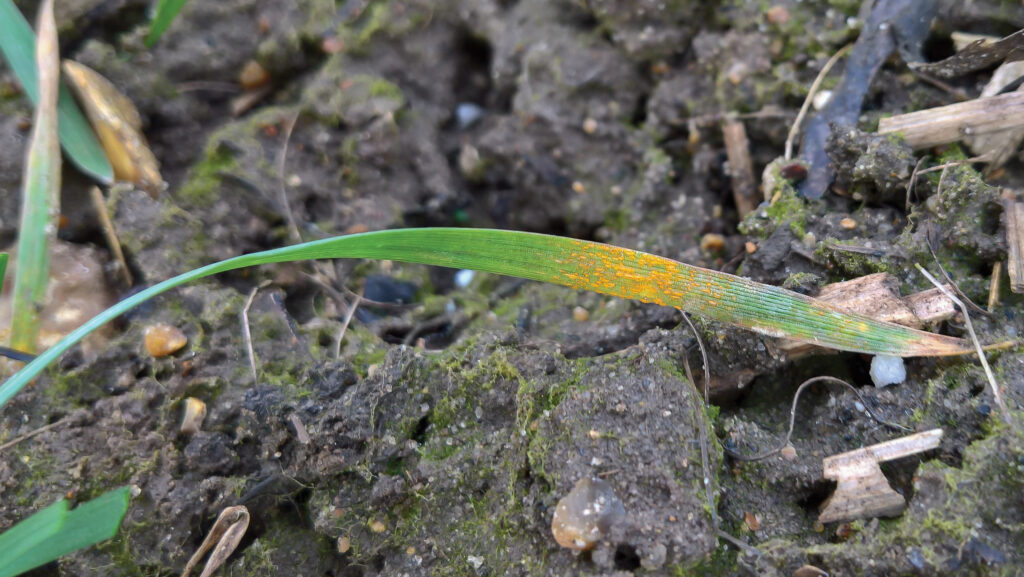Growers warned to stay vigilant for yellow rust this autumn
 © Blackthorn Arable
© Blackthorn Arable Growers are being advised to keep a watching brief for yellow rust on susceptible wheat varieties after a mild start to autumn provided ideal conditions for the disease.
With plenty of weather still to come and temperatures having dipped this week, agronomists are urging vigilance rather than action at this stage – but remind farmers that the situation has changed.
See also: How Cotswold potato grower produces high-quality seed
Many of the winter wheat varieties in the ground this season have the Yr15 major resistance gene, which was overcome by a new strain of yellow rust earlier in the year, so there is the potential to have “a mess on our hands”, says Patrick Stephenson, a regional agronomist at Niab.
“The timing of this yellow rust development was unfortunate in that there wasn’t enough of an opportunity to produce required quantities of seed of better choice varieties for this autumn,” he says.
“We know that quite an area of wheat is at high risk, especially the hard feed wheats, and we need to keep an eye out.
“The very mild conditions mean that plenty of wheat has gone in, and yellow rust has been seen on volunteers.”
He doesn’t recommend an autumn spray for yellow rust in most circumstances, but accepts that some growers may be forced into it.
“Let’s hope that some colder weather does the trick and stops it in its tracks.”
Jock Willmott, an agronomist at Ceres Rural, points out that for those considering a spray, the opportunity to travel on fields is disappearing by the day.
“An autumn yellow rust spray is not unheard of and we have been bitten before,” he says.
“Any infected leaves are likely to die off in the winter, but we need to be mindful that there is next to no genetic resistance to yellow rust out there.”
The use of an azole in the autumn may be relevant where the disease is developing and it is still possible to travel, he believes.
“It’s low cost and effective.”
Given the threat posed by the new race, some growers will be inclined to spray, he acknowledges.
“Either way, we all need to be very vigilant over the winter and ready to take early action.”
Agrovista agronomist Chris Bean reports that an autumn yellow rust spray is not on his agenda down in Kent, although he accepts that it has been done in the past.
“The varieties we grow in this part of the country are not as susceptible and we didn’t really see yellow rust until mid-May last year, as it started in the North.
“While more wheat has gone into the ground, the focus has been getting the herbicides on. If yellow rust does start to develop, the hope is that some frosts will trim it back effectively.”

